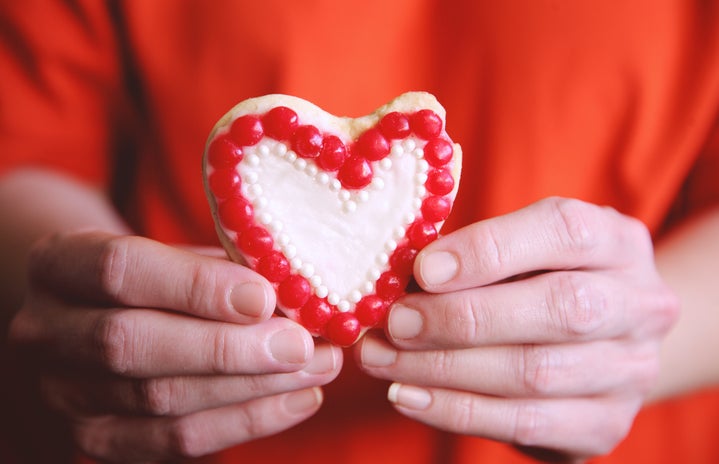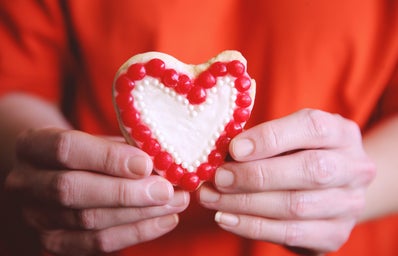A popped leg, a boombox and a declaration of love — and boom! You’ve got the perfect formula for a romantic comedy.
From opposites attract to kissing in the rain, tropes are commonly used plot points that give us that bubbly feeling in our stomachs. Rom coms offer the perfect amount of escapism versus reality that leave us looking for our next movie fix. Lately, there’s been a new kind of rom com, finding its home mostly on Netflix. But to truly appreciate this new rom com, we have to take a little trip down the rabbit hole that is the history of the rom com.
Let’s start out with William Shakespeare. When we talk about the creator of the rom com, he really holds the title with classics like Much Ado About Nothing and The Taming of the Shrew. Shakespeare created the common idea that enemies can turn to lovers or a couple will often have multiple obstacles to get through before they can be together.
Plays are commonly the inspiration behind history’s most popular romantic comedies, like The Philadelphia Story, which would later be turned into a movie in the 1930s starring Katharine Hepburn. Around this time was when the term “screwball comedy” came about. It was often about a battle of the sexes and featured strong female leads.
In the 1930s, strong female characters were a common part of romantic comedies, which could have been a result of recent women’s movements during the age of the flappers and suffragettes.
Later in the 1950s, rom coms focused on the more conservative values of marriage. The ‘50s idyllic romantic comedies focused on showcasing a cookie-cutter lifestyle acting as an escapist view of post-war life.
Romantic comedies have the common theme of showcasing social revolutions that were occurring at the time of creation. They’re often a source of escapism, but they reflect certain aspects of life. If we look to any period and the romantic comedies that spawned from it, there’s often a correlation between the general mood of that generation and the movies that were created during that time. Romantic comedies are an art form, and art imitates life — or at least what we wish life to be.
The 1970s brought about a new kind of rom com that focused more on a sexual revolution, especially regarding female characters. Annie Hall, a 1970s classic, was one of the first, if not the first romantic comedy to feature a not-so-happy ending.
Moving into the ‘80s, we have to look at the era that was defined by John Hughes and his view of teenage life. It was one of the first times where female heroines were back in the forefront of romantic comedies since the 1930s. Movies like Pretty in Pink and Sixteen Candles, both starring Molly Ringwald, featured a young girl during trivial parts of her life. A girl’s family forgets her birthday, or her prom date flakes on her. This was one of the first times that the regular problems of a teenage girl were made the forefront of a story.
The ‘90s were dominated by Meg Ryan and Julia Roberts. Both women became iconic for their numerous roles as leading women. They starred in feel-good movies like Notting Hill and When Harry Met Sally. These movies became instant hits at the box office and continued to inspire an entire decade of romantic comedies. Each film guaranteed a happy ending and created some of the most iconic movie scenes in romance history, like Meg Ryan on top of the Empire State building and a high-school-aged Heath Ledger dancing on bleachers. They reflected a time of contentment.
The 2000s were a time for unconventional romantic comedies like Juno and 500 Days of Summer. These movies showcased real relationships with dysfunctional characters. Unconventional and feel-good romantic comedies are more where we stand now in 2018. The biggest difference in 2018 romantic comedies however, is representation.
Crazy Rich Asians was the number one movie in America for weeks, and it featured an entirely Asian cast, an unprecedented occasion for any American film genre. Love, Simon premiered in 2017 and was the first major motion picture to depict a same-sex romantic relationship between the main characters. Netflix’s hit To All the Boys I’ve Loved Before featured an Asian lead in a teen romantic comedy. The movie earned the main stars millions of new Instagram followers and has inspired a rejuvenated love in a younger generation for romantic comedies at a time when superhero films and franchises reign supreme.
Romantic comedies reflect life and how a generation wishes life to be. They offer an insight into the minds of each generation’s general feelings towards love and romance. They often follow cultural movements, the good and the bad. There is no shortage of problems with appropriation and racist portrayals of characters in movies from the past; They’re a glimpse into the mindsets of the writers at the time.
Romantic comedies have seen multiple upheavals of what it means to be: 1. Romantic, and 2. Funny. Each generation has a different definition of how we express humor and love, and that’s not necessarily a bad thing. Romantic comedies have generally not done a good job of representing different people, from a sexual orientation standpoint to a racial standpoint.
This year could be the beginning of a new kind of romantic comedy, one that leans into escapism and realism, while featuring characters of different backgrounds. Embracing people for who they are is what is going to save the rom com and help it to grow into more accurate representations of life.


